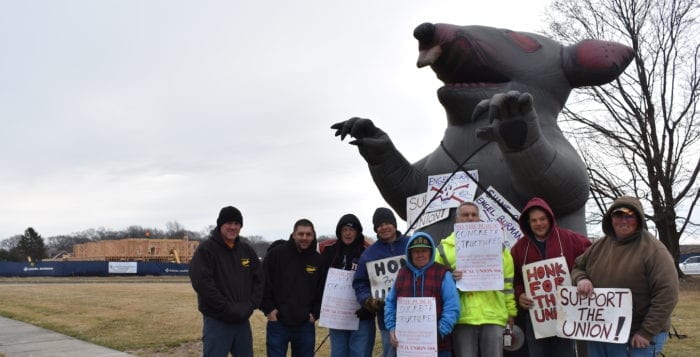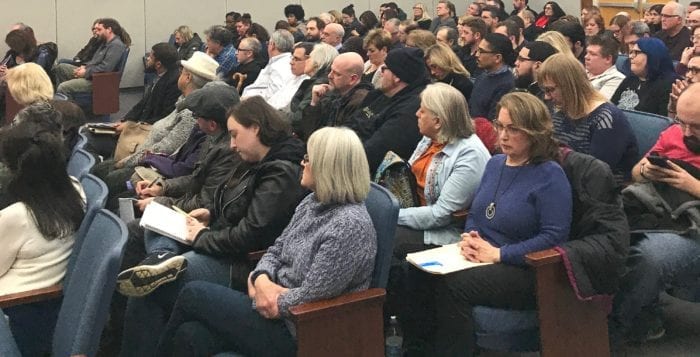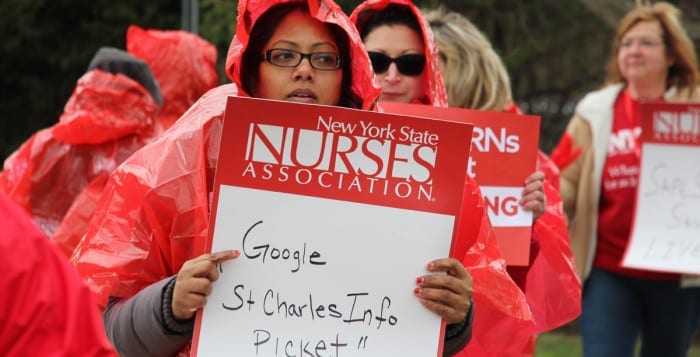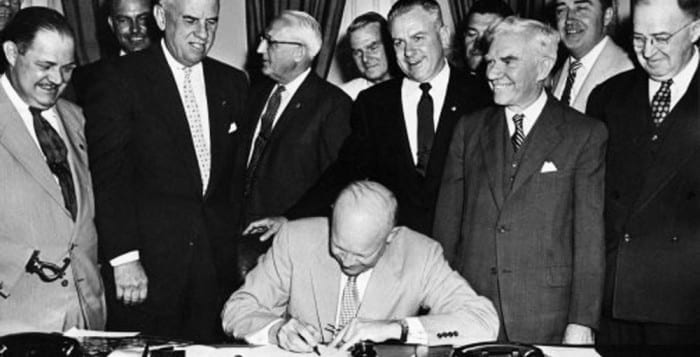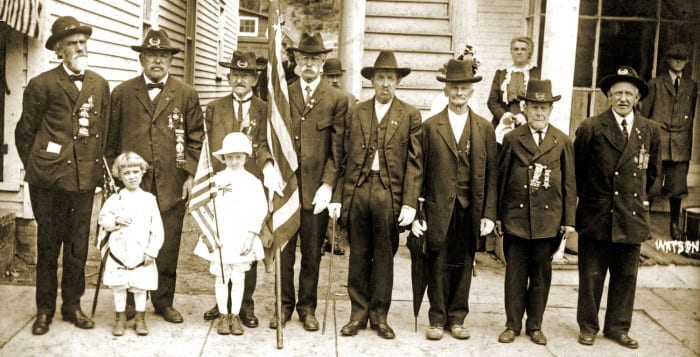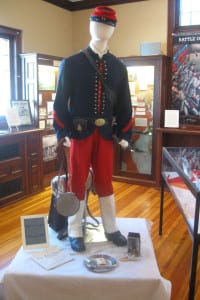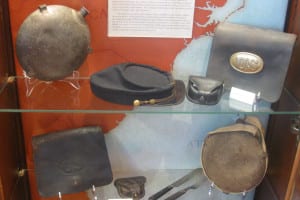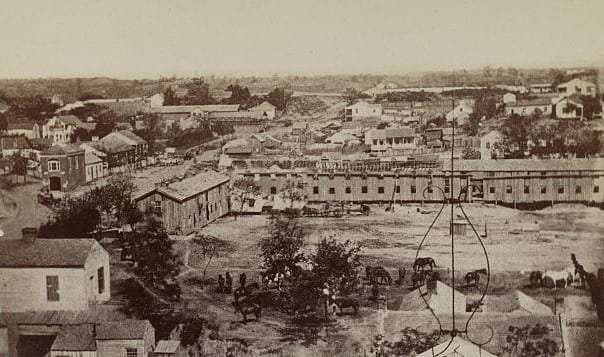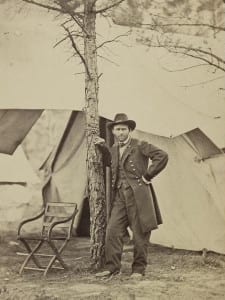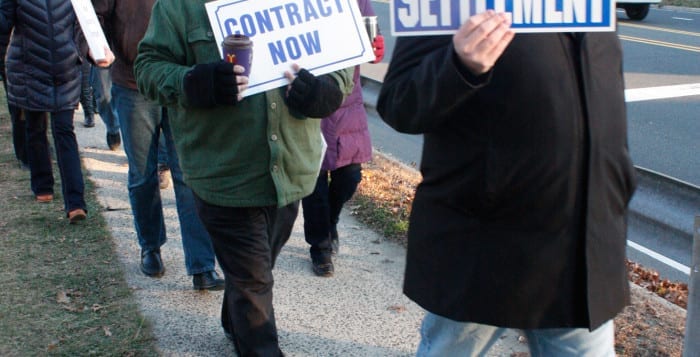As workers in bright orange crawled over the skeleton of two upcoming senior living facilities in Mount Sinai, several members of a local union stood in front of a large, blowup rat, saying the developer has refused to use unionized labor.
Local Union 66, which represents over 1,000 people in the building construction sector, stood outside the development March 25 as they criticized the developers The Engel Burman Group, of Garden City, for using Concrete Structures, a Ronkonkoma-based contractor.
“They just poured all the concrete the last two weeks. A lot of work here has been done so far that we should have been doing,” said union member Darren Smith in front of the construction site. “Do you think I want to be out here? I could be in there, working.”
A representative of Concrete Structures could not be reached by press time.
Joe Cavalieri, the recording secretary of Local 66, said the union has had talks with Concrete Structures in the past about unionizing, but could not come to an agreement.
“They’re not paying area standard wages,” Cavalieri said. “They do get IDA money, which is public money, and they charge exorbitant amounts of money for the housing, but they don’t want to pay the area standard of construction workers.”
Units in the complex will range from studio up to two bedrooms, but a spokesperson from Engel Burman has said they have not determined the prices of rent yet.

Prevailing wage is the standard set by the New York State comptroller, which determines the wage and benefit rate paid to construction employees if they are working on public works projects or government-funded work sites. While the developer is the recipient of the Brookhaven town Industrial Development Agency payment in lieu of taxes agreement, the amount was not enough to conform to mandate prevailing wage, according to Cavalieri.
The recording secretary said construction workers’ average wages on Long Island were closer to $70 an hour, including both wages and benefits. Based on conversations he’s had with the company, Concrete Structures workers make less than that.
“We live in a high-priced area, and we continually combat these contractors — not only local, but also out of state,” he said. “They take advantage of our economy out here, while not contributing anything to it.”
Construction is ongoing for two projects, a 120-unit Bristal Assisted Living community and a 225-unit senior rental complex for individuals 55 and over on a 24-acre parcel of land around the corner of Route 25A and Echo Avenue in Mount Sinai. The developers, The Engel Burman Group of Garden City, started construction around the beginning of the year.
The development was also a recipient of a 13-year payment in lieu of taxes agreement with the Town of Brookhaven IDA, which would see the developer continue to pay $46,000 in property taxes for the first three years while the two projects are under construction. Then in the fourth year, the tax payments would increase to around $190,000 and would continue to rise to about $2.2 million at the end of the PILOT. From there, the developer would pay the full assessed value of the properties, which is expected to be more than the PILOT payments.
A spokesperson for Engel Burman said that the problem was between construction subcontractors, and that it did not involve the developer.
Though protesters outside the facility had signs with Engel Burman and an X through the name, some protesters complained that the developer had hired the nonunion labor in the first place.
“The contractor is paying peanuts,” said union member George Leone. “That’s a big job, a lot of our guys could be doing it.”
The Mount Sinai Civic Association, which gave initial support to the project, criticized the decision by the IDA, saying it would mean a loss in tax revenue to the area.
According to the civic association, the development is a part of a 1999 legal stipulation which resulted from a lawsuit filed against the town by them on the 24-acre parcel of land, and the land has always been designated for that purpose of creating these senior facilities.

